It’s that time of year when intelligent garden makers are winding down and turning their efforts towards a fall garden cleanup and “putting things to bed.” But when you are working in a garden with a naturalistic design – specifically created to support pollinators and insects through the winter season, what kind of fall garden maintenance should you really be doing?
The current season’s garden party is apparently about to end, and it is time to start working on a fall yard cleanup.
But wait, I screwed that up when I went to the nursery a couple of days ago. All I needed was some of those little plastic trays under your houseplants, but I came home with a trunk load of plants. (I mean…)
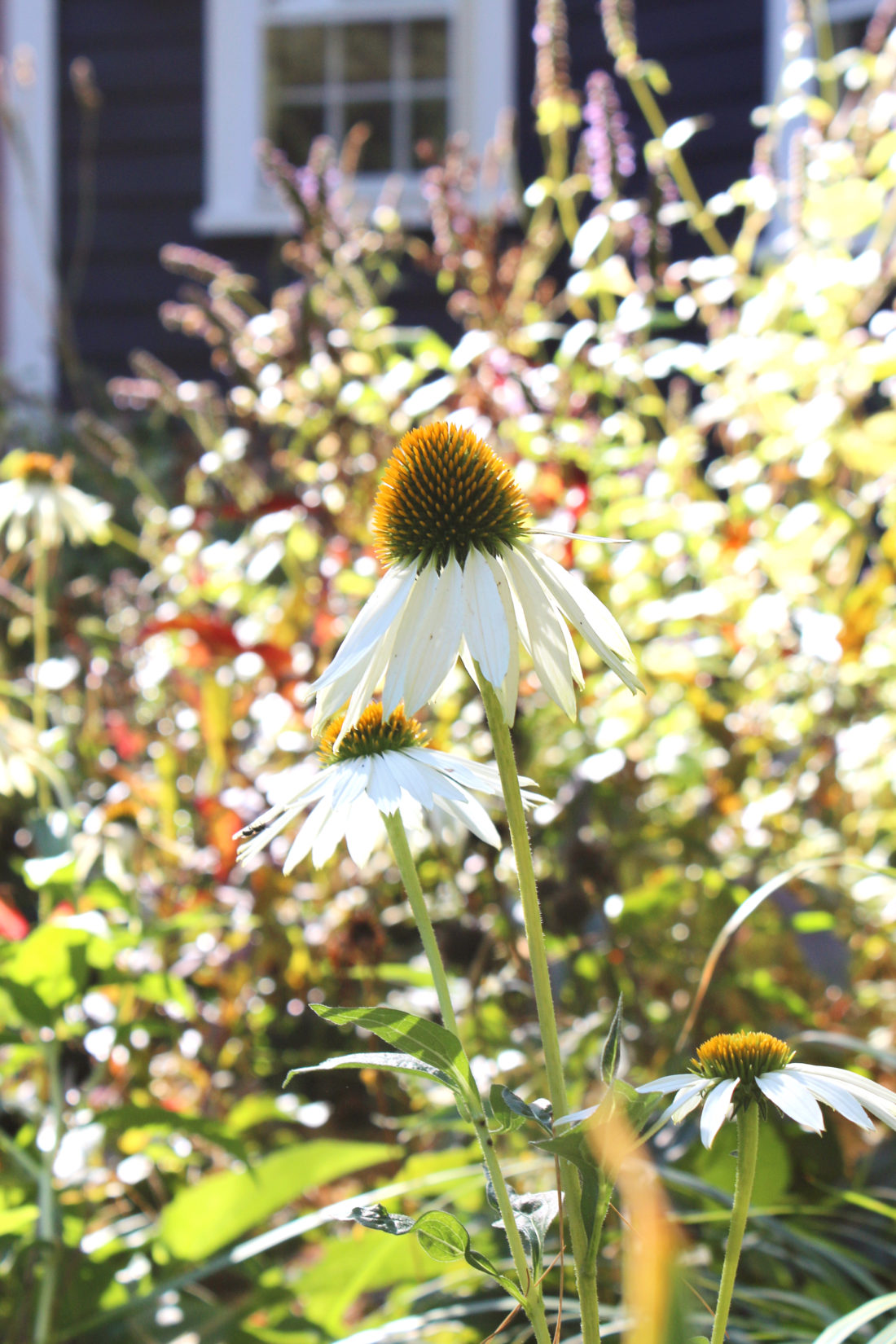
Of course, I bought a bunch of plants – I’m human and not immune to the lure of an end-of-season 50% off sale… (I mean, I know I espouse never doing this in my planting design course… but sheesh…I’m not a monster! And I reallllly did neeeed more of those Annabelle hydrangeas….)
Fall is hanging on, and so am I.
I will ride out this growing season until Mother Nature takes my keys and calls me a cab. New plants are going in, I’m sowing seeds, and I’m still spreading mulch and prepping beds to make spring a little easier.
The Spectrum of Gardening Maintenance and Fall Garden Maintenance and Cleanups
Usually, by this time of year, I’ve had quite enough, and I tend towards rationalizing the ritual sacrifice of half-hardy plants that I promised myself I’d dig up and bring inside or store for the winter. I justify this by saying that I am “experimenting” to see if maybe they are actually hardier than expected. (They never are). Bottom line: I get tired, and I let things go. I’ll worry about it next year. Don’t we all do this?
But this year is different. We don’t need to go into all the reasons why, but I think it has to do with fear of the unknown. I’m having a good time right now, so I’m savoring it while I can.
Gardening, fixing things up, and distracting myself with beautiful things and things that need my care keeps me sane and in the moment.
I read recently in one of my Piet Oudolf books that he defines a spectral range of garden maintenance standards.
Intensive vs. Extensive Gardening
On one end of the spectrum, there is ‘intensive’ gardening. Intensive gardening is a way of gardening and maintaining plants in a way that most of us are used to. We treat each plant uniquely and individually as we care for its particular needs. We also take a heavy hand in managing the planting areas. (I.e., weeding, controlling seedlings, deadheading, keeping things where we think they should go, – the typical garden maintenance stuff, etc.).
On the other end, you have what he calls ‘extensive’ maintenance. (Which is a word choice I am struggling to agree with… but ok). ‘Extensive’ maintenance is the opposite of intensive, and it implies you treat all the plants in a scheme the same. This also means you give up much of the control we usually assume. In an extensive system, things go to seed, and you let them. Plants move and migrate as nature would have it. And garden maintenance might only consist of mowing it down all at once at the end of the season—a very different backyard cleanup scenario.
I surely do like the idea of ‘extensive’ maintenance – so easy!
But, of course, I also want the “perfect” drifts to look perfectly wild.
So, where does that leave me?
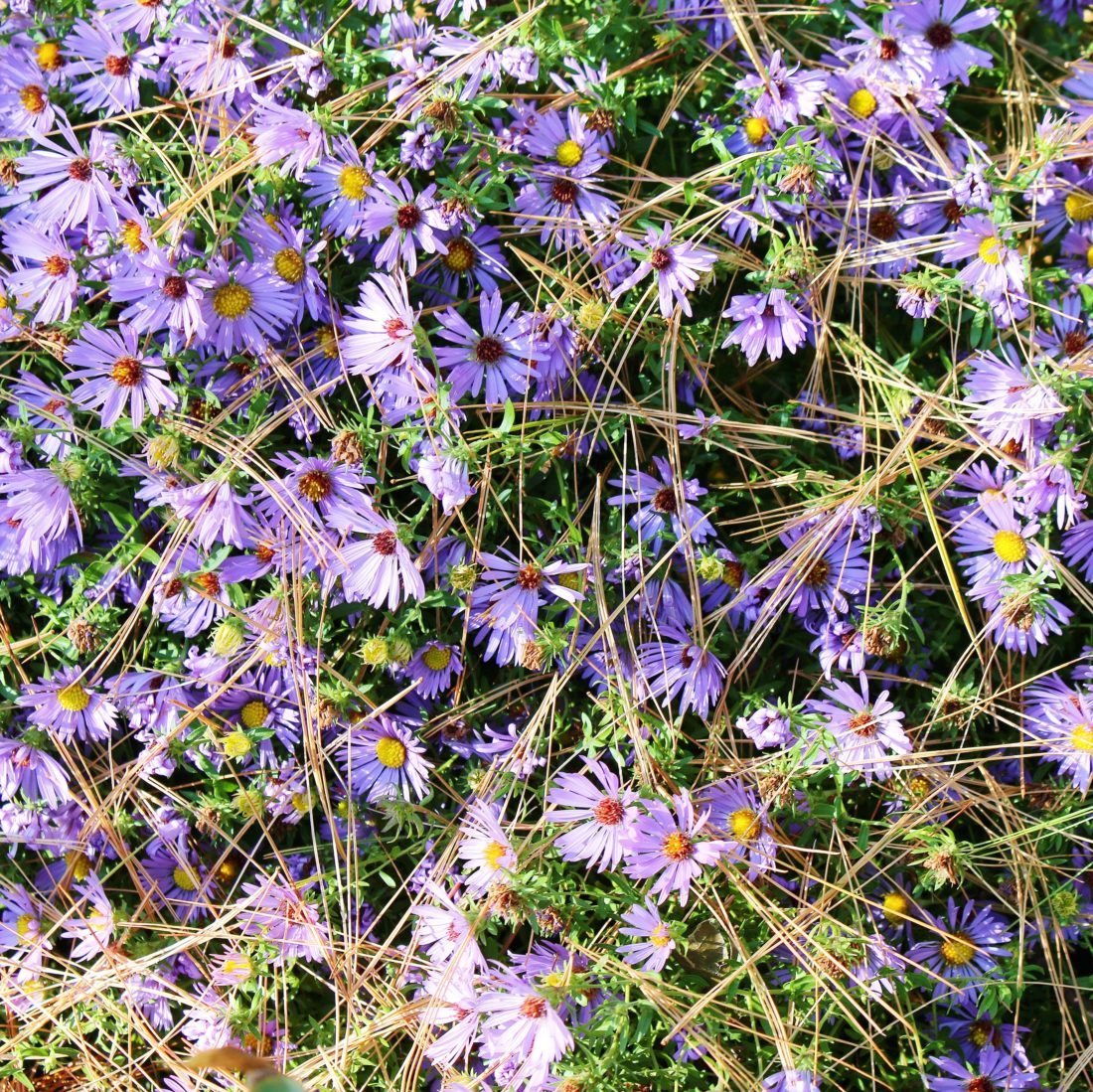
An Autumn Gardening Cleanup Checklist (for a Naturalistic Front garden)
The naturalistic style means being comfortable with a level of garden maintenance that is somewhere in the middle, between intensive and extensive, and that’s where I am trying to find garden cleanup footing with my new naturalistic front garden.
I’d love for it to be just as I imagined, with billows of wildish blooms perfectly composed by only running it over with a mower once a year. But reality strikes. So here is my actual plan for gardening in the autumn in my naturalistic style beds. (Which is still a work in progress).
1) Chop back what isn’t pretty or structural – but don’t do it all at once.
Since many of the plants were chosen for their winter interest and attractive seed heads, it makes no sense to cut anything down that is just coming into the prime of its winter beauty. So, my first rule is to chop in stages.
Nothing goes down unless and until it is really ugly. If it lasts through the winter (which I doubt anything will…), I’ll take it down in March – before the bulbs poke through.
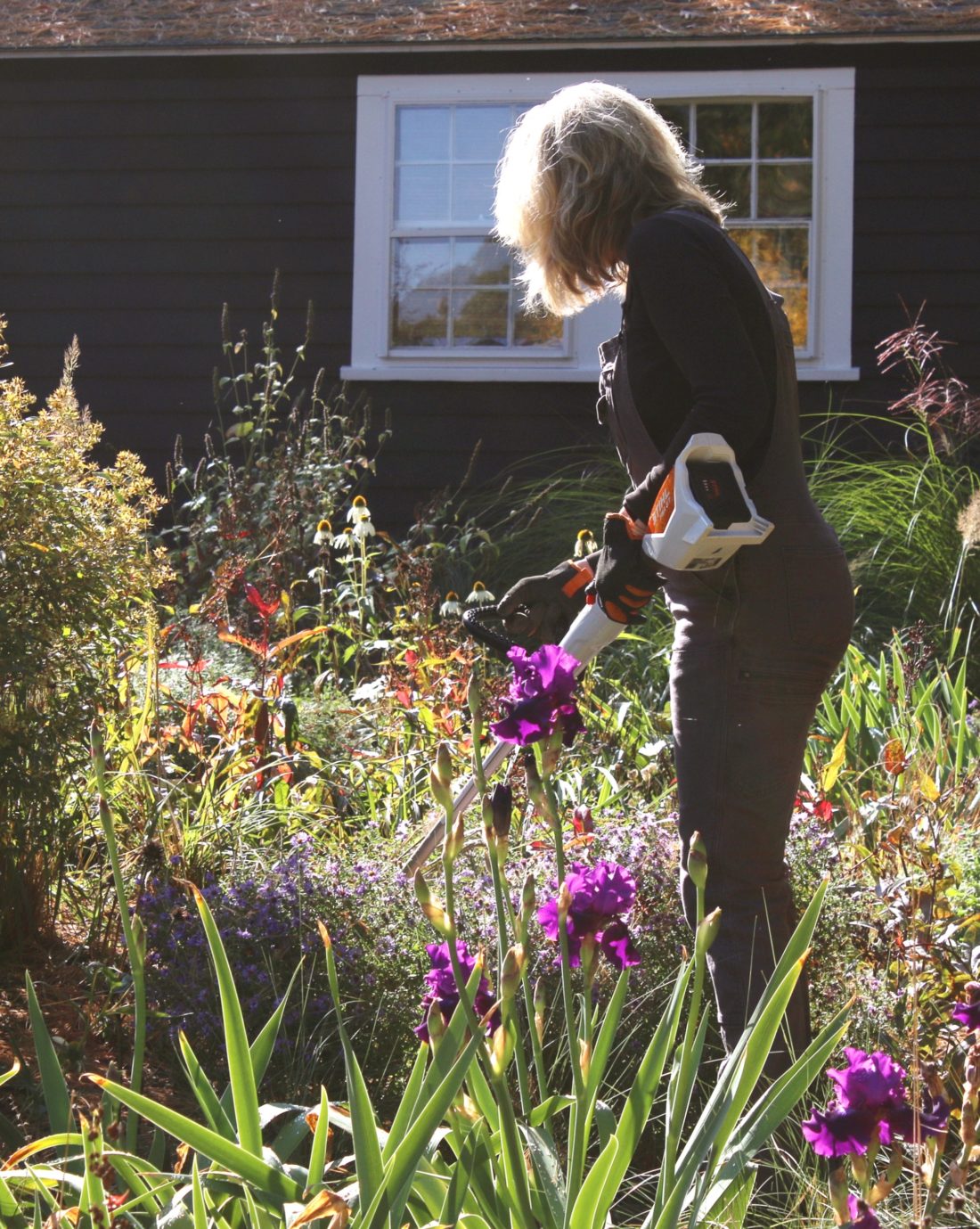
2) Chop for mulch
I am chopping things back to quickly turn the spent plant pieces into mulch that stays in the bed.
For this, my new battery-powered Stihl string trimmer (the FSA 57 by Stihl) is coming in handy. I’ve been experimenting with my technique to see if I can consistently string trim in a top-down motion (rather than a side-to-side sweep). If I’m going to chop – it is as much about chopping the plant material into little pieces as it is just chopping the plant material off. I want everything to stay in place- no waste, no bags of offcuts – I want to pulverize what I cut, leave it to age, and decompose in situ.
If I start cutting at the bottom, I get long pieces that I can’t easily cut into something that is more mulch-like. If I start at the top, it is a bit more work, but with practice, I can work my way down the stem and get the small pieces I want. And I get more of a self-mulching result. This is a work in progress, too.
Note: I recently learned from The Doug Tallamy lecture (listen in!) that it is best to leave about 1 foot on the stalk still standing to help insects. So, I am modifying the method to leave a little more length.
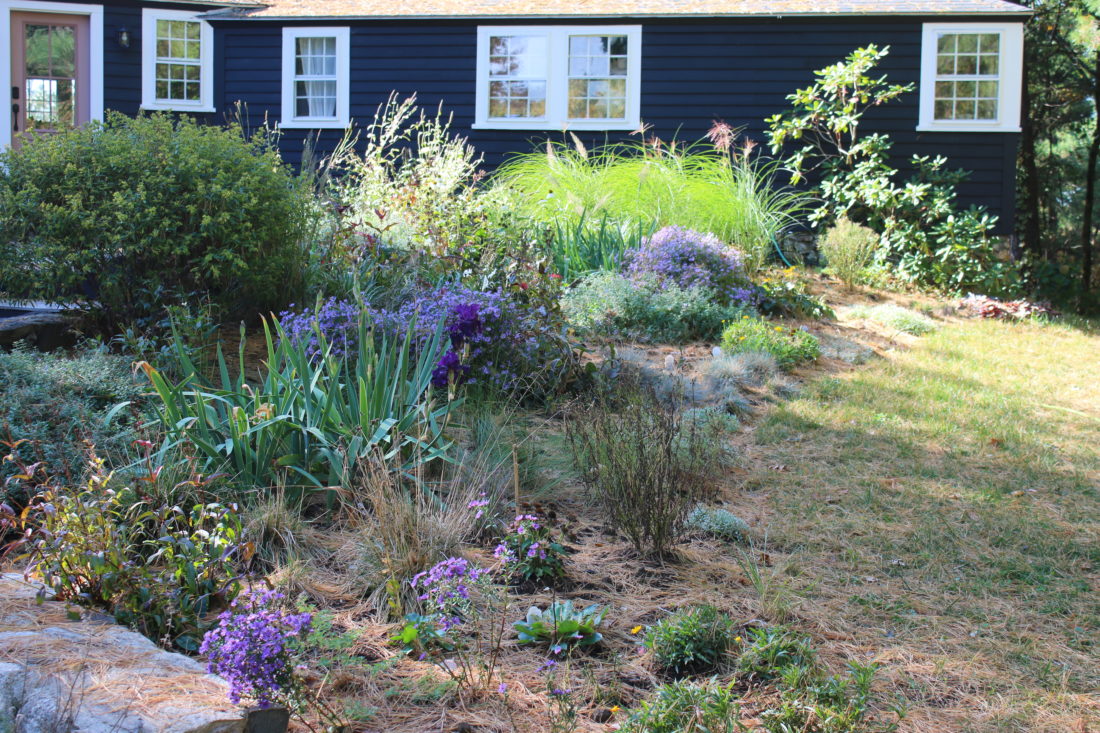
3) Take a measured and controlled approach to the self-seeding plants
I’m allowing myself to try to control the self-seeding stuff – but only a little. I mainly want those things to seed and spread (at least for now, when I anxiously await the fullness of more mature plants). With these plants, I am cutting them low to allow me to quickly gather up the seed heads and carry them around to spread them to all the places I want them.
4) To each their own, for the Grasses
Since the grasses are one of the main elements of this design, and I have a variety of different types, I am working on a grass-specific set of guidelines.
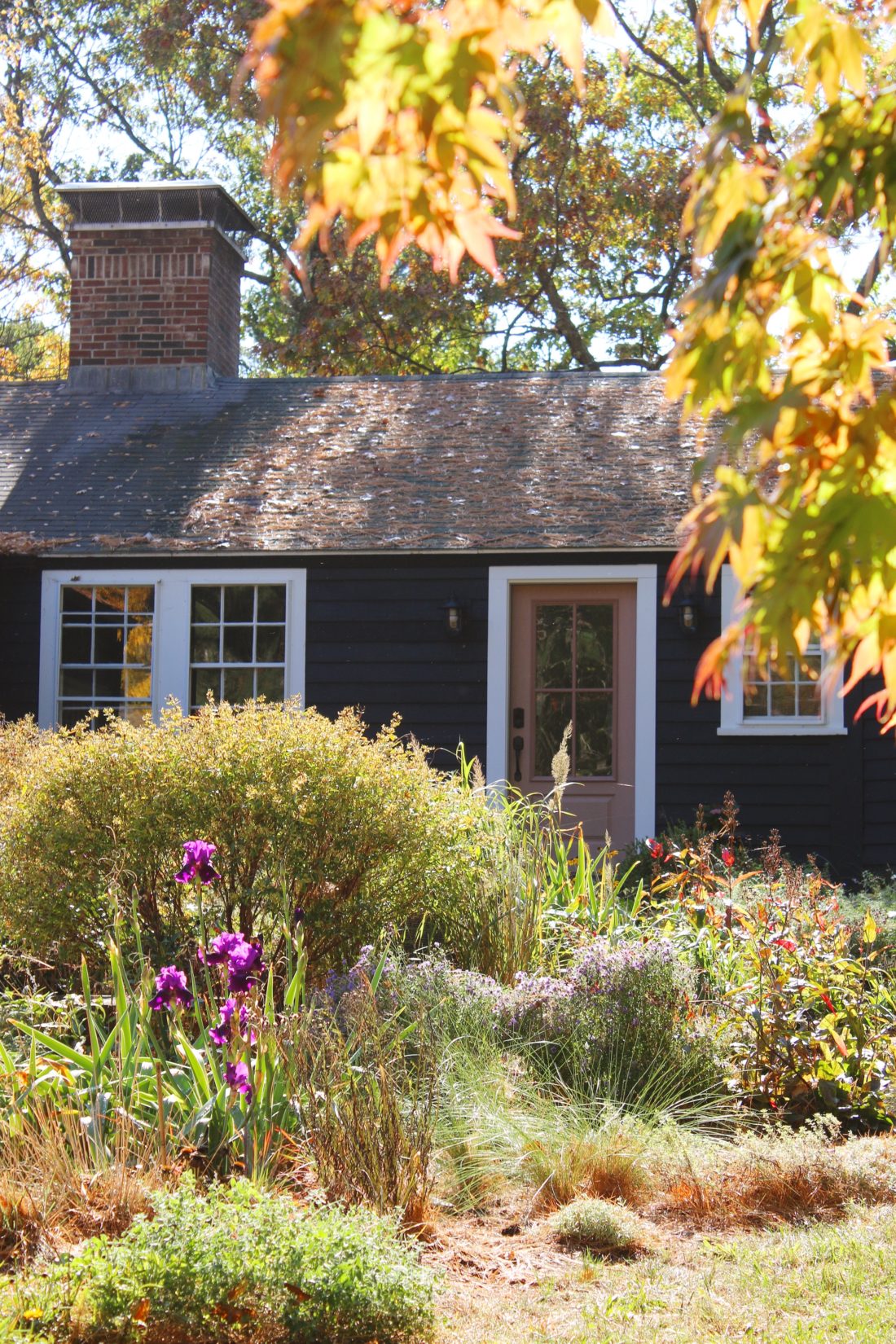
Some grasses are getting cut immediately, and some are staying (for now). The Deschampsia cespitosa was a favorite of the bunny, and at this point, they are just ragged. A quick swipe with the Stihl will make them beautiful clumps again.
The rest of the grasses I’ll wait on. Some never bloom and look fine. Many are still blooming out and should be pretty, at least until the first snow or the next huge wind gust.
After they finish their autumn display, I’ll give them a chop. I’ll probably do this from the bottom and clear most of the debris to the compost heap. There will be so much of it that I don’t think I have the patience to chop it from the top into all those tiny bits (without a shredder).
5) Leave the best perennials for Spring
The perennials with nice seed heads will be left – again – for now. Coneflowers, black-eyed Susan, echinops, and daisies all fall into this category.
Using power tools instead of fine gardening standard tools like hand pruners is somewhat liberating. It’s not as liberating as a once-and-done mow job – but I’d still call it cathartic and much faster.
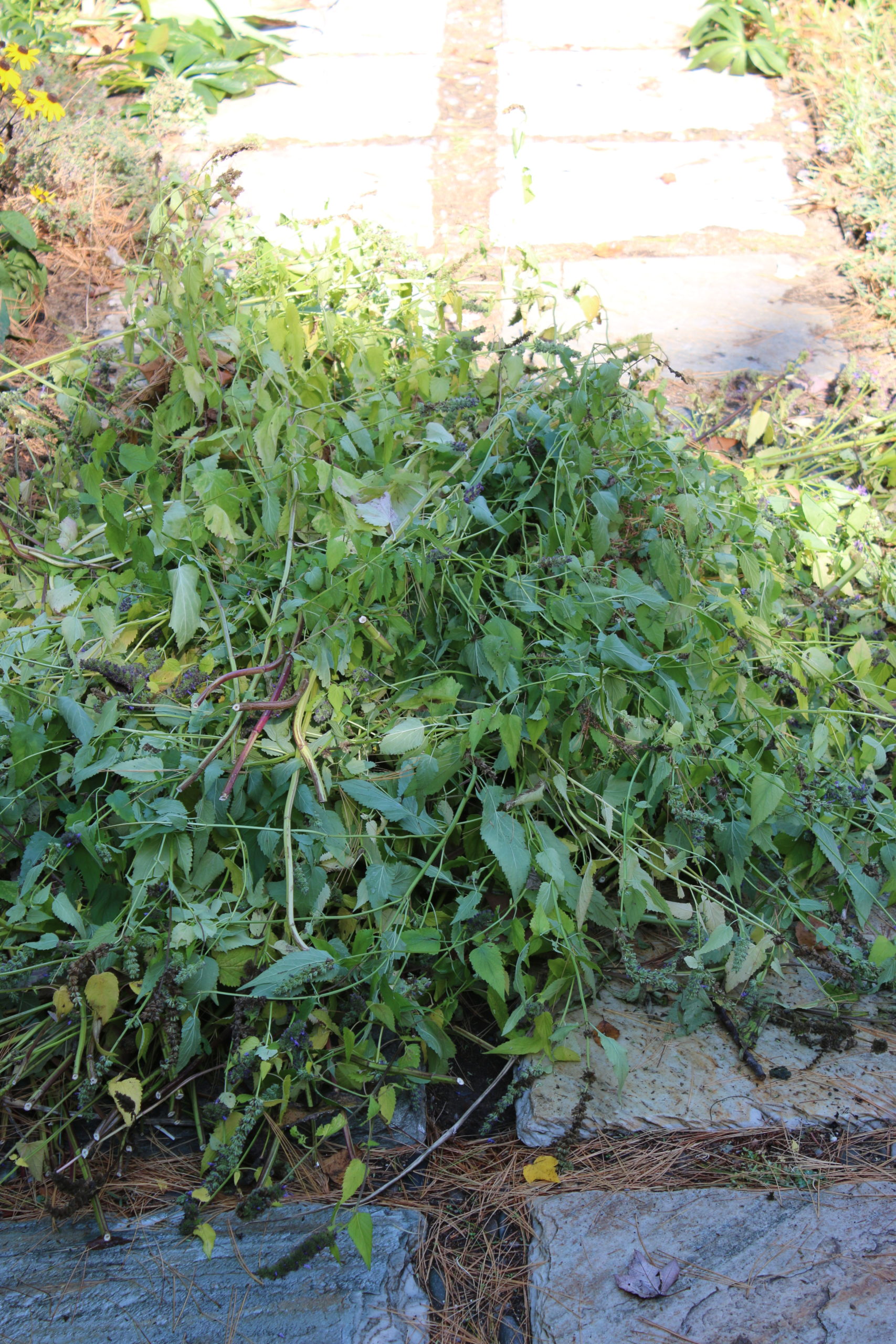
The giant Agastache that has flopped was a joy to be rid of. It was starting to feel like a friend that had one too many at the party and was relying a little too much on its friends to keep it upright. It has been put to bed. The rest of us can relax now. <see before and after pics>
6) Clean up the pine needles
I’m using the Stihl BGA 57 battery-powered blower to dislodge this season’s mountain of pine needles that fell last week. (In the same storm that took a tree across the driveway and left us powerless for 3.69 days – yes, I count the minutes and seconds when the power is out). Less pine needles will help some plants that shine right now show off (sedum, asters, the late blooming irises). I often leave some of the deciduous tree leaves on the grass, but the pine needles are plant-killing party crashers – and I always feel like I need to show as many of them as I can to the door.
While it is true that pine needles make a great mulch, they also contribute to soil acidity. They are so thick this year (probably due to the drought) that I am sure they will choke out my favorite plants if I don’t clean them up at least a little.
7) Tweak the design
And about some of those late-season plant purchases – they are actually experiments. ( I swear!) And I am not trying to justify impulse buys from the garden center! (Ok, maybe I am, a little).
But I have some tweaks to make to this whole naturalistic scheme that I designed. There are things that I am not 100% happy with. (Hence, the purchase of onesie-twosies of random grasses and perennials that I might use to sub out and fix some of my design issues. But I’ve got to test them out first…). I think I’ll have to write a whole post about that title: “The things I did wrong or didn’t like and wouldn’t do again in a naturalistic planting scheme.” Would that be interesting? I’ve learned a few things…
xo,
Rochelle
More Fall Garden Cleanup and Decor posts you might be interested in:
Share this post:

The thing about Intensive vs. Extensive maintenance comes from agricultural jargon. It does seem odd out of that context to me, but Intensive means with the most management and labor, and Extensive means with minimal labor.
I recently listened to a podcast that mentioned how vital the first two feet from the ground of plants are for bee habitat over winter, so I am doing only very minimal cutting down until spring. Diseased things are going, but everything else is staying.
Also I haven’t needed to deadhead any coneflowers because the squirrels are doing it for me! I may have tons of volunteer coneflowers pop up in the lawn next year, but that’s okay.
Midway through this gardens first winter and I think next year it will just need to be mown down (and left for winter mulch) next year. It is a hot mess – no pretty hoar frosted plants… just a snow mashed mess (right by my front door)… the winter interest dream for this patch is a bust here in rugged New England.
Thank you!!1